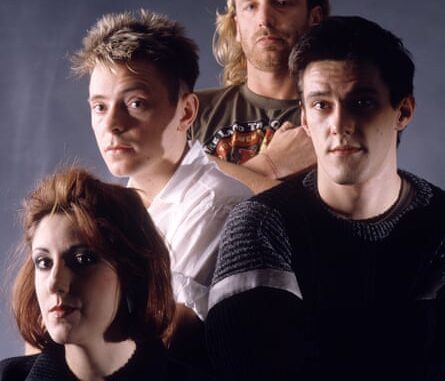
When Joy Division came to a tragic halt with the death of Ian Curtis in 1980, few could have predicted that its surviving members would not only continue but transform into one of the most forward-thinking bands of the decade. Rising from grief and artistic uncertainty, New Order emerged as a band that would redefine the boundaries between rock and electronic music. Their evolution wasn’t just a continuation—it was a bold reimagining of what rock could be in the age of synthesizers and drum machines.
New Order began as a band in search of identity. The shadow of Joy Division loomed large, and their early work—like the debut album Movement—carried remnants of that darkness. But as the 1980s progressed, so did their sound. Instead of staying tethered to the brooding minimalism of their past, they began to integrate elements of synthpop, Italo disco, and early house music into their compositions. This was not a gimmick or trend-chasing; it was a reinvention born of necessity and creative restlessness.
The breakthrough came with “Blue Monday” in 1983—a seven-minute, beat-driven single that didn’t just blur the lines between club music and rock, it shattered them entirely. With its mechanical drums, cascading synths, and Bernard Sumner’s detached vocals, “Blue Monday” became the best-selling 12-inch single of all time. It wasn’t just a dance track; it was a cultural moment that signaled a seismic shift in popular music.
At the core of New Order’s innovation was their ability to humanize electronic sounds. Where many synth-driven acts leaned into futuristic coldness, New Order injected emotion into their programming. Peter Hook’s high, melodic basslines added a warmth and urgency to tracks like “Bizarre Love Triangle” and “Temptation.” Gillian Gilbert’s atmospheric keyboards and Stephen Morris’s precision drumming gave their songs a pulse that felt alive, not mechanical.
Lyrically, the band didn’t strive for obvious anthems. Instead, they explored emotional ambiguity—longing, uncertainty, and hope tangled with detachment. Bernard Sumner’s voice, often criticized for its lack of force, became an instrument of vulnerability. In songs like “Your Silent Face” or “Perfect Kiss,” his understated delivery made the lyrics feel even more sincere, letting melancholy and melody coexist beautifully.
New Order’s legacy is also tied to their unique place in music culture. They weren’t just a band; they were part of a movement tied deeply to Manchester’s Haçienda nightclub and the birth of rave culture. Through their involvement with Factory Records and the Haçienda, New Order helped pioneer a new model of artist-led independence in music and nightlife, even if the financial side of that story was notoriously chaotic.
Albums like Power, Corruption & Lies and Low-Life became templates for a new genre—what would eventually be called alternative dance or dance-rock. Their sound resonated with a generation that didn’t see a conflict between guitars and synthesizers. Bands as varied as The Killers, LCD Soundsystem, and M83 cite New Order as a core influence, and the DNA of their sound can be heard across genres, from indie rock to electronic dance music.
What made New Order revolutionary was not just their innovation—it was their refusal to be categorized. They were misfits in both the rock and electronic worlds, yet they built a bridge between them with authenticity. Their music was not about virtuosity or bravado, but about feeling—something that resonates more deeply with each passing decade.
Their transformation from Joy Division’s darkness into New Order’s shimmering light was not an abandonment of the past, but a tribute to survival. They didn’t just carry on—they turned tragedy into innovation. They found new ways to express old wounds, using machines to make human music. And in doing so, they revolutionized not only rock, but the sound of the modern age.
Today, New Order’s catalog still pulses with relevance. Whether rediscovered on retro playlists or reimagined on dance floors, their music continues to inspire. In a music world increasingly driven by genre-blending, New Order stands as proof that the best art often comes from those who never intended to fit in.
They didn’t follow the rules of rock—they rewrote them. With synths and soul, New Order created a future that we’re still catching up to.

Leave a Reply